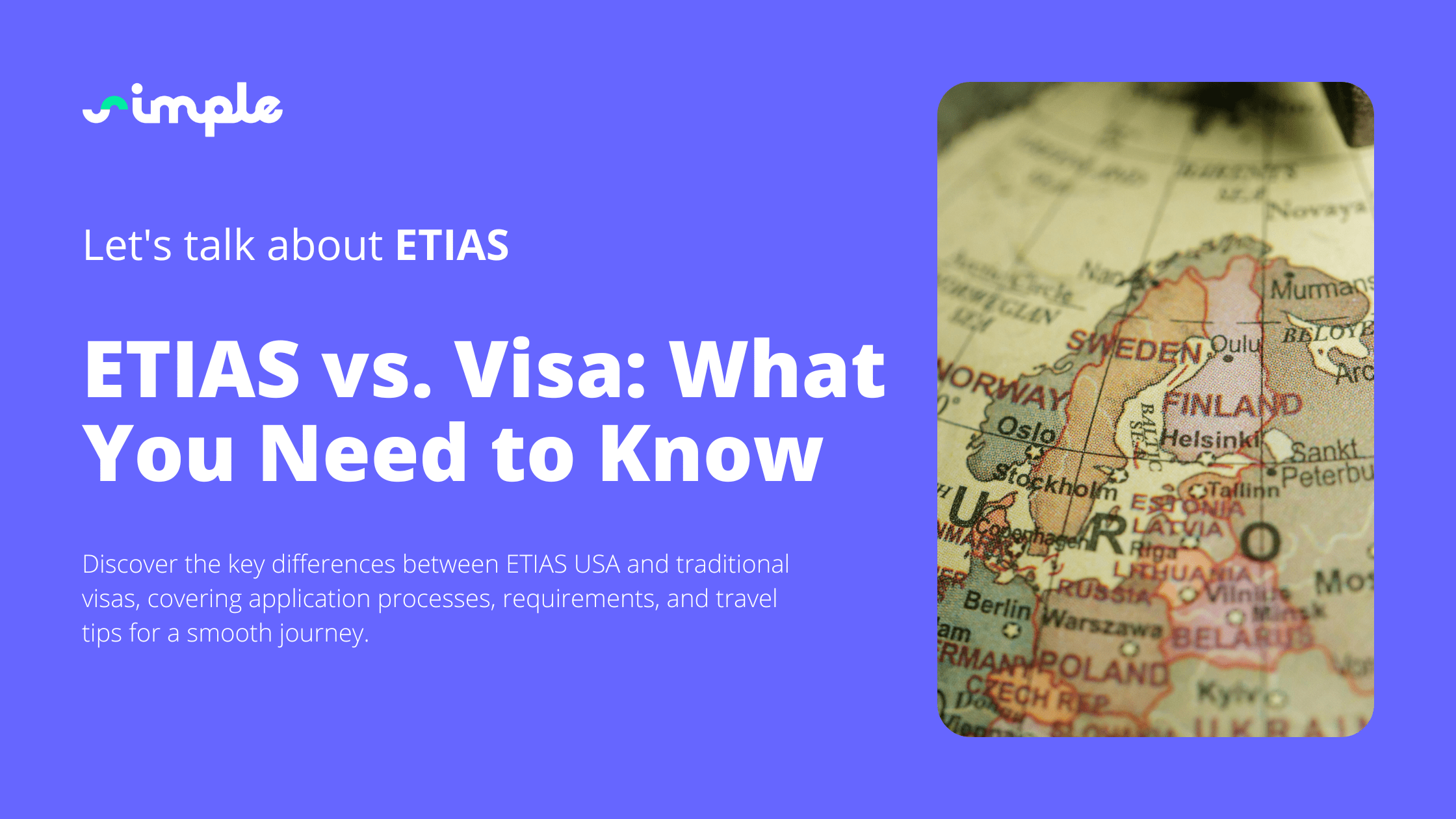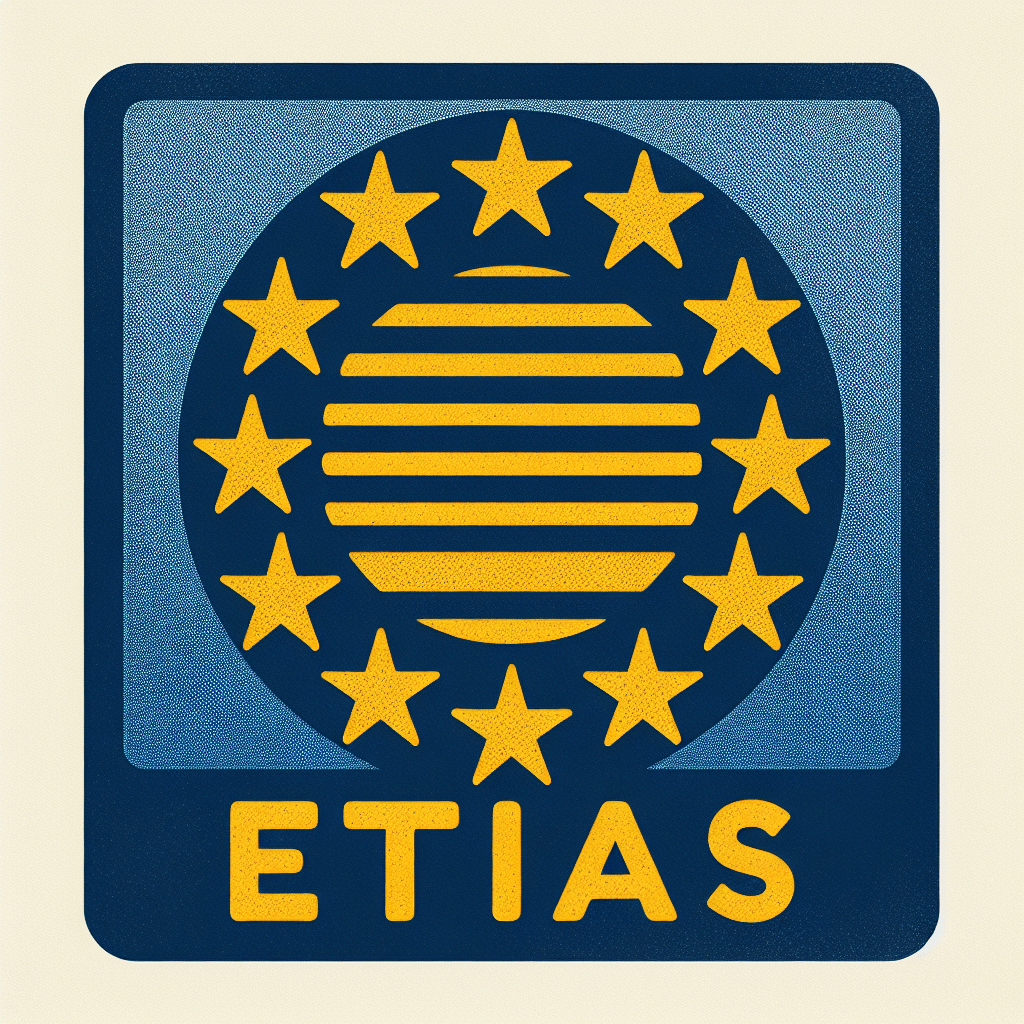ETIAS vs. Visa: What You Need to Know

Traveling to the European Union from the United States has become a common endeavor for many Americans, whether for business, leisure, or education. As international travel continues to evolve, understanding the requirements for entering the Schengen Area is crucial. Two primary methods of entry are the European Travel Information and Authorization System (ETIAS) and traditional visas. While both serve the purpose of regulating entry into Europe, they differ significantly in terms of application process, requirements, and validity. Recognizing these differences is essential for travelers to ensure a smooth journey.
With the introduction of ETIAS, the landscape of European travel has shifted, offering a streamlined alternative to the conventional visa process. This change underscores the importance of distinguishing between ETIAS and traditional visas, especially for U.S. citizens planning trips to Europe. The purpose of this discussion is to clarify these distinctions, providing travelers with the necessary information to make informed decisions. For those interested in learning more about ETIAS and its implications for U.S. travelers, further details can be found on the ETIAS USA page.

What is ETIAS?
Definition and Purpose
The European Travel Information and Authorization System (ETIAS) is a new electronic travel authorization system designed to enhance security and streamline travel to the Schengen Area. It is not a visa but rather a pre-screening process for travelers from visa-exempt countries, including the United States. The primary purpose of ETIAS is to identify potential security risks before travelers arrive in Europe, thereby improving safety for both residents and visitors. By collecting and analyzing data from applicants, ETIAS aims to prevent individuals who may pose a threat from entering the Schengen Area.
ETIAS serves as a European travel authorization that simplifies the process for travelers who previously did not require a visa to enter Europe. It is part of a broader effort by the European Union to modernize border management and ensure that travel to Europe from the USA and other countries remains secure and efficient. The system is designed to be user-friendly, allowing travelers to complete the ETIAS registration online with ease. This electronic system is expected to significantly reduce the time and effort required for travelers to gain entry into the Schengen Area.
Eligibility Criteria
ETIAS is applicable to travelers from countries that are currently visa-exempt for entry into the Schengen Area. This includes U.S. citizens, who have traditionally enjoyed visa-free travel to Europe. To be eligible for ETIAS, travelers must hold a valid passport from a visa-exempt country and plan to stay in the Schengen Area for up to 90 days within a 180-day period. The ETIAS application process involves providing personal information, travel details, and answering security-related questions.
The ETIAS requirements for USA travelers are straightforward, focusing on ensuring that applicants do not pose a security risk. The application process is designed to be quick and efficient, with most applicants receiving their ETIAS approval within minutes. However, in some cases, additional processing time may be required if further checks are necessary. It is important for travelers to apply for ETIAS well in advance of their planned travel dates to account for any potential delays.
Benefits and Limitations
One of the key benefits of ETIAS is the ease of application and rapid approval process. Unlike traditional visas, which can involve lengthy paperwork and in-person interviews, ETIAS can be obtained entirely online. This convenience makes it an attractive option for travelers seeking to visit Europe without the hassle of a full visa application. Additionally, the ETIAS fee payment is relatively low, making it a cost-effective solution for short-term travel.
However, there are limitations to the ETIAS system. It is only valid for short stays of up to 90 days within a 180-day period, and it does not permit travelers to work or study in the Schengen Area. Furthermore, while ETIAS facilitates visa-free travel to Europe, it does not guarantee entry. Border authorities retain the right to deny entry if they deem it necessary. Travelers should also be aware of the ETIAS validity period, which is typically three years or until the passport expires, whichever comes first. This means that travelers may need to reapply for ETIAS if their passport expires before the three-year period is up.
Understanding Traditional Visa Systems
Definition and Purpose
Traditional visas are official authorizations that allow individuals to enter, leave, or stay temporarily in a foreign country. Unlike the ETIAS visa waiver, which is specific to the Schengen Area, traditional visas are required by many countries around the world and vary significantly depending on the destination and the purpose of the visit. The primary purpose of a visa is to regulate the entry of foreign nationals, ensuring that they meet the necessary criteria for entry and stay. This process helps maintain national security and manage immigration effectively.
Visas are typically issued by the consulate or embassy of the country a traveler wishes to visit. The requirements for obtaining a visa can vary widely, depending on factors such as the applicant’s nationality, the intended duration of stay, and the purpose of the visit. For example, a tourist visa may have different requirements compared to a business or student visa. Understanding these differences is crucial for travelers to ensure they have the correct documentation for their trip.
Types of Visas and Their Applications
There are several types of visas, each catering to different travel purposes. Common categories include tourist visas, business visas, student visas, and work visas. Each type of visa has its own set of requirements and application processes. For instance, a tourist visa typically requires proof of travel plans and financial means to support the stay, while a student visa may require proof of enrollment in an educational institution.
The application process for traditional visas can be more complex and time-consuming than the ETIAS application process. It often involves submitting detailed documentation, attending interviews, and paying higher fees. The processing time for visas can also vary, with some applications taking weeks or even months to be approved. This contrasts with the relatively quick ETIAS approval time, which is designed to facilitate easier travel to Europe from the USA and other visa-exempt countries.
Duration and Flexibility
Traditional visas offer varying durations of stay, depending on the type of visa and the issuing country’s regulations. Some visas allow for short-term visits, while others permit longer stays, such as student or work visas. The flexibility of a visa can also depend on whether it allows for multiple entries or is restricted to a single entry. This flexibility can significantly impact a traveler’s ability to move freely between countries during their trip.
Renewal processes for traditional visas can be complex and may require travelers to leave the country and reapply from their home country. This can be a significant consideration for those planning extended stays or frequent travel. In contrast, the ETIAS validity period typically covers multiple trips over three years, offering more convenience for short-term travel within the Schengen Area. However, travelers should be aware that traditional visas may offer more options for longer stays and different types of activities, such as work or study, which are not covered by the ETIAS travel document.
Key Differences Between ETIAS and Visas
Application Processes and Requirements
The application processes for ETIAS and traditional visas differ significantly in terms of documentation and timelines. The ETIAS application process is designed to be straightforward and efficient, allowing travelers to complete the ETIAS registration online. Applicants are required to provide basic personal information, travel details, and answer security-related questions. The process is typically completed within minutes, with most applicants receiving their ETIAS approval time shortly thereafter. This streamlined approach is a key advantage for those seeking visa-free travel to Europe.
In contrast, traditional visa applications often require more extensive documentation, such as proof of financial means, travel itineraries, and letters of invitation or sponsorship. The process can also involve in-person interviews at a consulate or embassy, adding to the time and effort required. Planning and preparation are crucial when applying for a traditional visa, as processing times can vary widely depending on the type of visa and the applicant’s nationality. Travelers should ensure they have all necessary documents and allow ample time for their application to be processed.
Eligibility and Duration of Stay
Eligibility criteria for ETIAS and traditional visas also differ. ETIAS is available to travelers from visa-exempt countries, including US citizens ETIAS, who plan to visit the Schengen Area for short stays of up to 90 days within a 180-day period. This European travel authorization is ideal for tourists and business travelers seeking short-term visits without the need for a full visa.
Traditional visas, on the other hand, cater to a broader range of travel purposes and durations. Eligibility for these visas depends on the specific requirements of the issuing country and the type of visa being applied for. For example, a student visa may require proof of enrollment in an educational institution, while a work visa may require a job offer from a company in the host country. The duration of stay allowed under a traditional visa can vary, with some visas permitting long-term stays for work or study, which are not covered by the ETIAS travel document.
Cost and Accessibility
Cost is another key difference between ETIAS and traditional visas. The ETIAS fee payment is relatively low, making it an affordable option for short-term travel to Europe. This cost-effectiveness, combined with the ease of the ETIAS application process, enhances its accessibility for travelers from the USA and other visa-exempt countries.
Traditional visas, however, can be more expensive, with fees varying depending on the type of visa and the issuing country. Additional costs may include fees for document processing, interviews, and expedited services. These costs can add up, making traditional visas a more costly option for travelers. Accessibility is also a consideration, as the process for obtaining a traditional visa can be more complex and time-consuming, potentially deterring some travelers.
Overall, while both ETIAS and traditional visas serve the purpose of regulating entry into foreign countries, they offer different benefits and limitations. Understanding these key differences is essential for travelers to make informed decisions about their travel plans and ensure they have the appropriate documentation for their journey.
Simplify Your Travel with SimpleVisa
Fast & Easy Visa Applications
Navigating the complexities of international travel authorizations can be daunting, but SimpleVisa simplifies the process for you. Whether you’re applying for ETIAS or a traditional visa, SimpleVisa offers a streamlined, user-friendly platform that ensures a smooth and hassle-free application experience. Their expert guidance and efficient processing save you time and stress, helping you get your travel documents with ease.
🔹 Ready to apply? Get started now with SimpleVisa and secure your travel authorization in just a few clicks!

Conclusion
Choosing the right travel authorization is crucial for ensuring a seamless journey to Europe or any other destination. For travelers from the USA, understanding the differences between ETIAS and traditional visas is essential. The ETIAS visa waiver offers a convenient and cost-effective solution for short-term travel to the Schengen Area, making it an attractive option for tourists and business travelers. Its streamlined application process and rapid approval time provide a hassle-free experience for those eligible for visa-free travel Europe. However, for travelers planning longer stays or those with specific travel purposes such as work or study, traditional visas may be more appropriate. These visas offer greater flexibility in terms of duration and activities permitted, albeit with a more complex application process and higher costs.